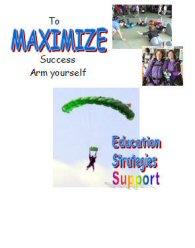Learning Disabilities
Polk Elementary School
Alexandria, Virginia

| Teacher
for students with Learning Disabilities Polk Elementary School Alexandria, Virginia |

|
For six years I worked in an Alexandria public school with students with a variety of disabilities. The students in my classes were in grades K through 5 and were qualified for Special Education Services under labels such as Developmental Delay, Specific Learning Disabilities, Emotional Disturbance, Autism, Orthopedicly Impaired, Hearing Impaired, and Other Health Impaired. In 1999 I met a young student who would alter the path of my career. The next year this student was put on my caseload. He was a very bright, ambitious, persistent, personable second grader with moderate, mixed Cerebral Palsy. Because of motor difficulties, this student had difficulty showing others how bright and creative he was. When he did work he had to dictate it to an assistant who would write it down. Without realizing it the work he did was subtly altered by the assistant.
I was determined to find a way for this student to become more academically independent. I found software he could use to begin to type on his own and illustrate using graphics and clip art. His first published piece was a book about a magical island.
 |
After experiencing the thrill of skydiving I wanted to share it with my students with special needs. While preparing the lesson, I realized that in order be successful at anything in life everyone, not only students with special needs, but EVERYONE must study, learn good techniques, and have others to support efforts. |
Working with our Occupational Therapist I became aware of an idea fairly new to me, Assistive Technology! Having recently earned a Masters in Special Education, I didn’t remember very much emphasis on technology. Excitedly I began going to workshops and learned about George Mason’s Certificate in Assistive Technology. I earned the Certificate while exploring Assistive Technology available in my district. From having one laptop in my classroom the first year, I began accruing the reputation of one who used technology with the students. By fall of 2004 I accumulated 7 working computers in my class, with a great variety of Assistive and Instructional Technology. My students in grades 1-5 were creating PowerPoint presentations on SOL subject matter, presentations on class events, Trouble Shooting Guides, and quick facts for using animation in PowerPoint. Students with very few literacy skills were writing stories with picture to text software, completing tests with scanning/study software, writing with word prediction software and text to speech software. Most of my students used Assistive Technology to publish 2-4 hard bound books, worthy of a place in a school library!
I also used Instructional and Assistive Technology to help students acquire and practice academic skills and to prepare them for the Virginia Standards of Learning Assessments. Here are three of the many study guides I created that were used in several grades in our school.



Students can use these sets of pictures to practice organizing stories. The COPS Strategy is used to help students remember the components of editing written work.